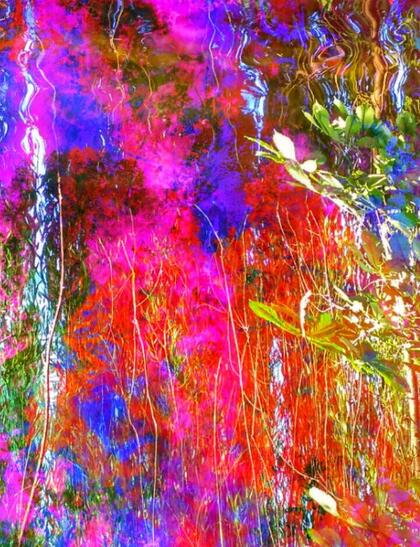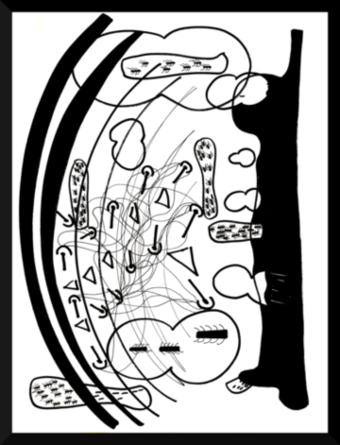

OUROBOROGRAPHY
Alexis Pope's art is particularly influenced by philosophers such as Adorno, Derrida and Blanchot, poets Mallarmé, Baudelaire and Rimbaud, as well as Brazilian artist Oiticica amongst myriad others. For Pope not only the title but also the contents of Monica Amor's essay, "Of adversity we Live", describes well the environment that artists still find themselves in, in the third decade of the 21st century. Deeply immersed in interdisciplinary experimental work, he has developed a hybrid system of making art which he calls ouroborography.
Ouroborography is the discipline of creating visual art using a camera as the symbolic instrument of writing, to record parallel multifarious artistic processes. The artist coordinates these disciplines in real time. Each successful ouroborograph contains within itself a "dramatic catharsis and a dialectical transcendence", [1] the material, expression and form of which, by the very nature of the processes involved leads to artworks of ambiguity and complexity. Jacques Derrida writes:
"however artful the photographer may be, whatever his or her intervention or style, there is a point where the photographic act is not an artistic act, a point where it passively records, and this poignant passivity would be the chance of this relation with death; it captures a reality that is there, that will have been there, in an undecomposable now.”[2]
In ouroborography, as one aspect of artistic production ceases, dies, (shutter opening or closing for example) others are continuing or immediately beginning, these transformations of emphasis are a continuous unveiling. The death of time in one discipline is heralded on the horizon of being in the other. The artist does not have Derrida's moment of passivity, the process is a continuum to “undiscover'd country from whose bourn no traveller returns”.[3] The work of the artist in this sense has much in common with the ouroboros of antiquity, which is best known as a symbol of self-reflexivity or cyclicality, especially in the sense of something constantly re-creating itself and the eternal return. Alexis T. Pope is the inventor of the ouroborograph and has been intensively experimenting with its forms and parameters.
en.wikipedia.org/wiki/User:Alexis_T._Pope/sandbox
1. Kenneth Burke, A Grammar of Motives". University of California Press
2. Deridda, Copy, Archive, Signature, Stanford University Press 2010 P.9
3. William Shakespeare, Hamlet, Act III, scene 1
"There is geometry in the humming of the strings, there is music in the spacing of the spheres." ― Pythagoras“
The deeper the feeling, the greater the pain.” ― Leonardo da Vinci
"It is true that the eyes dominate the ears in our time." ― Karlheinz Stockhausen
"The Louvre is the book in which we learn to read." ― Paul Cezanne

All rights reserved copyright © Alexis Tinsley Pope 2021



